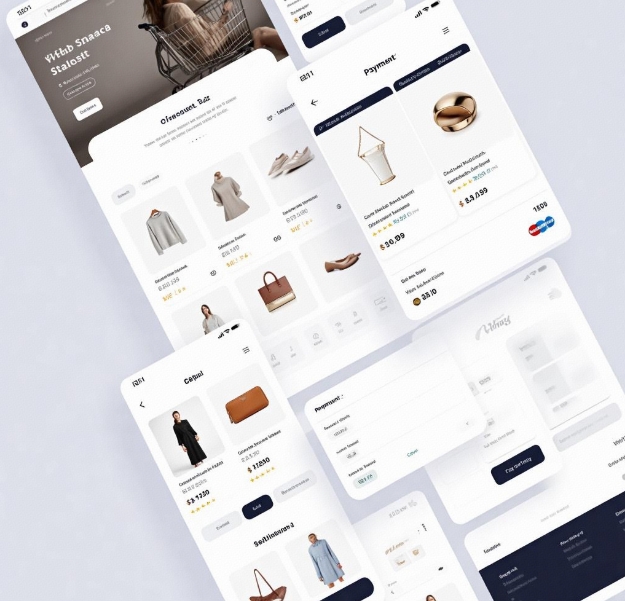Shenzhen Multi-User Mall Cross-Platform Development (iOS/Android/Web)
- latest articles
- 1.DApp Development & Customization: Merging Diverse Market Needs with User Experience 2.Analysis of the Core Technical System in DApp Project Development 3.How to achieve cross-chain interoperability in Web3 projects? 4.How does the tokenization of points reconstruct the e-commerce ecosystem? 5.How to Set and Track Data Metrics for a Points Mall? 6.What is DApp Development? Core Concepts and Technical Analysis 7.Inventory of commonly used Web3 development tools and usage tips 8.Development of a Distribution System Integrated with Social E-commerce 9.Six Key Steps for Businesses to Build a Points Mall System 10.What is DApp Development? A Comprehensive Guide from Concept to Implementation
- Popular Articles
- 1.Future Trends and Technology Predictions for APP Development in 2025 2.Analysis of the DeFi Ecosystem: How Developers Can Participate in Decentralized Finance Innovation 3.From Zero to One: How PI Mall Revolutionizes the Traditional E-commerce Model 4.DAPP Development | Best Practices for Professional Customization and Rapid Launch 5.Recommended by the Web3 developer community: the most noteworthy forums and resources 6.From Cloud Computing to Computing Power Leasing: Building a Flexible and Scalable Computing Resource Platform 7.How to Develop a Successful Douyin Mini Program: Technical Architecture and Best Practices 8.Shared Bike System APP: The Convenient Choice in the Era of Smart Travel 9.How to Create a Successful Dating App: From Needs Analysis to User Experience Design 10.From Design to Development: The Complete Process of Bringing an APP Idea to Life
In today's mobile internet era, e-commerce has become an industry that cannot be ignored. With the continuous development of technology, users' demands for shopping experiences are increasingly rising. Especially in Shenzhen, a global hub for technological innovation, developing cross-platform applications (iOS, Android, Web) for multi-user marketplaces has become a significant challenge. In this article, we will explore in detail the cross-platform development of multi-user marketplaces in Shenzhen, analyzing the technical challenges faced, solutions, and key elements in the development process.
I. Background and Needs of Cross-Platform Development
1.1 Market Background
As one of China's technological innovation centers, Shenzhen is home to a large number of e-commerce enterprises and startups. With the widespread adoption of smartphones, more and more companies are focusing on how to develop marketplace applications that are compatible with multiple devices. Especially for businesses aiming to reach a broader user base, it is often necessary to release their applications on multiple platforms, such as iOS, Android, and the Web.
According to industry statistics, the global mobile internet user base approached 9 billion in 2023, and consumer shopping habits have shifted significantly, with more people preferring to shop online via mobile phones or computers. To meet the needs of different user groups, marketplace platform development must ensure adaptability across various platforms, guaranteeing a smooth and consistent experience for users on any device.
1.2 Challenges of Cross-Platform Development
Cross-platform development refers to generating applications that can run on multiple platforms (such as iOS, Android, Web, etc.) from a single codebase. The primary advantage of this process is the significant savings in development time and costs, but it also comes with numerous challenges. Specifically, developers need to address the following issues:
Differences Between Platforms: Different operating systems have varying design philosophies, interface elements, and performance requirements. Ensuring a consistent user experience across multiple platforms is a major challenge in development.
Performance Optimization: Cross-platform frameworks often impact application performance. Balancing cross-platform compatibility with maintaining smooth application performance tests developers' technical skills.
UI Design: Each platform has its unique user interface design style. Efficiently designing UIs using cross-platform tools while ensuring adaptation to different screens and resolutions is an important issue.
Support for Third-Party Libraries and Tools: Some third-party libraries and tools may only support specific platforms. Selecting the appropriate cross-platform technology stack to ensure the application runs smoothly on multiple platforms is a critical factor in the development process.
II. Selection of Cross-Platform Development Technologies
In the cross-platform development of multi-user marketplaces, developers can choose from various technology stacks. Below are some of the most commonly used technology solutions:
2.1 React Native
React Native is a cross-platform development framework developed by Facebook, allowing developers to build mobile applications using JavaScript and React. With React Native, developers can use the same codebase to build both iOS and Android applications. React Native provides a near-native experience, allowing direct access to native components, and offers excellent performance.
For multi-user marketplaces, the advantage of React Native lies in its efficient development approach, enabling quick responses to market demands. Additionally, React Native's hot update mechanism allows developers to fix bugs quickly without having to republish the application.
2.2 Flutter
Flutter is a cross-platform development framework introduced by Google, using the Dart language to build high-performance, high-fidelity applications. Unlike React Native, Flutter does not rely on native components but renders the UI through self-drawing, ensuring more consistent performance across platforms.
Flutter offers strong support for UI design, allowing developers greater freedom to design user interfaces that align with brand styles. In multi-user marketplace applications, Flutter's advantages lie in its superior performance and consistent cross-platform experience, making it particularly suitable for marketplace projects with high UI requirements.
2.3 PWA (Progressive Web App)
PWA (Progressive Web App) is a technology that runs in a web browser but behaves like a native application. With PWA, developers can transform a traditional web application into a mobile app-like experience, supporting features such as offline functionality and push notifications.
For multi-user marketplaces, the advantage of PWA is its ability to span iOS, Android, and Web platforms without the need to develop separate applications for each, significantly reducing development and maintenance costs. Especially for small and medium-sized enterprises or projects with limited budgets, PWA is a cost-effective solution.
III. Core Functionality Design of the Marketplace System
When undertaking cross-platform development, the functional design of the marketplace system is crucial. An efficient and user-friendly marketplace application can provide a smooth shopping experience for users and increase conversion rates. Below are some essential core functionalities for multi-user marketplace systems:
3.1 User Account Management
The core of a marketplace is its users. The user account management system should include comprehensive functionalities such as user registration, login, password recovery, profile editing, and order inquiries. To enhance the user experience, convenient features like social login and QR code scanning for login can also be provided.
3.2 Product Display and Search
The product display page is the soul of a marketplace application. Products should be categorized for easy browsing, allowing users to view product details, specifications, prices, and other information. Additionally, robust search functionality and intelligent recommendation algorithms can significantly improve users' shopping efficiency.
3.3 Shopping Cart and Checkout
The shopping cart is one of the core functionalities for user purchases. Users can add selected products to the cart, modify quantities, or remove items. The checkout function needs to integrate various payment methods (such as Alipay, WeChat Pay, credit card payments, etc.) to ensure a smooth payment process.
3.4 Backend Management System
A marketplace application is not just a frontend system for users; the backend management system is equally crucial. Administrators need to manage products, process orders, view sales data, and handle inventory management efficiently. The development of the backend system must ensure seamless integration with the frontend marketplace system.
IV. Practice and Challenges of Cross-Platform Development
4.1 User Experience Optimization
One of the most important goals in cross-platform development is ensuring a consistent user experience across different devices. Whether accessing via iPhone, Android devices, or the Web, users expect similar interface designs, operational flows, and response speeds. Therefore, UI/UX design must be thoroughly optimized based on the cross-platform framework to ensure the user experience meets expectations on each platform.
4.2 Performance Optimization
Although cross-platform development significantly improves development efficiency, its performance often lags behind native development. To ensure the marketplace application remains smooth on all platforms, developers need to employ technical measures for performance optimization. For example, React Native can use native modules to address certain performance bottlenecks, while Flutter avoids performance losses associated with native controls through its self-drawing engine.
4.3 Selection of Cross-Platform Frameworks
Choosing the right cross-platform framework is crucial for the success of a project. In the development process of multi-user marketplaces, developers need to select the most suitable framework based on the project's actual requirements. For applications with extremely high performance demands, Flutter may be a better choice; for projects with shorter development cycles and limited budgets, React Native or PWA may be more appropriate.
V. Conclusion
In an environment as innovative and competitive as Shenzhen, cross-platform development has become an indispensable part of the e-commerce industry. Whether on iOS, Android, or the Web, providing a consistent and efficient shopping experience across multiple platforms has become a core issue for many marketplace developers to address. By rationally selecting cross-platform development frameworks, optimizing user experience and performance, multi-user marketplace applications in Shenzhen can stand out in the market and meet the increasingly demanding needs of users.
Through this exploration, we have not only understood the advantages and challenges of cross-platform development but also learned how to choose suitable technology solutions based on actual needs. As technology continues to evolve, cross-platform development will become more mature, offering more possibilities and innovation space for future e-commerce platforms.
-

How does the tokenization of points reconstruct the e-commerce ecosystem?
With the continuous advancement of internet technology and the gradual prolifera···
-

How to Set and Track Data Metrics for a Points Mall?
With the rapid development of the e-commerce industry, points malls, as a common···
-

Development of a Distribution System Integrated with Social E-commerce
With the rapid development of internet technology, the e-commerce industry has e···

 Blockchain
Blockchain












